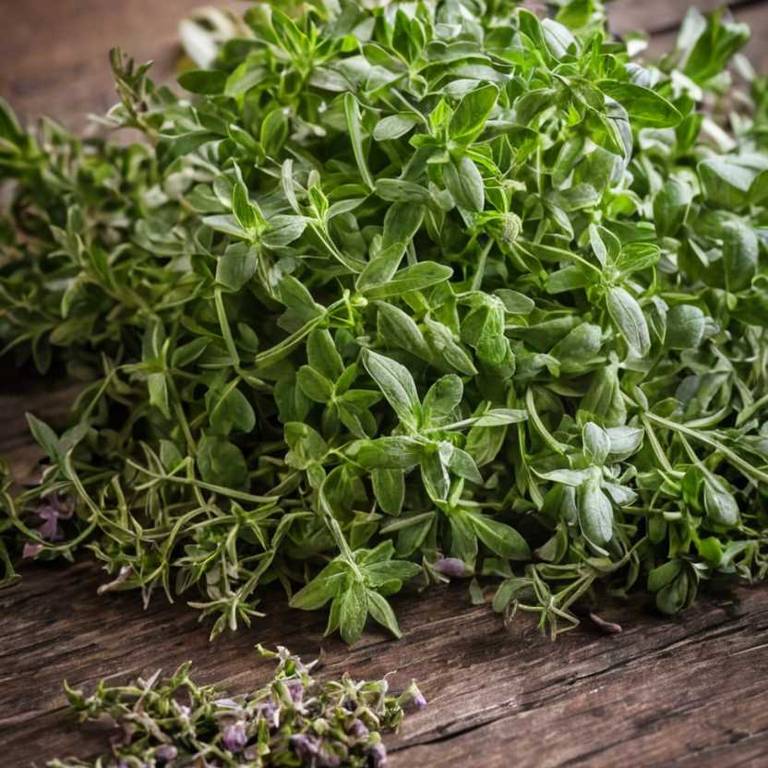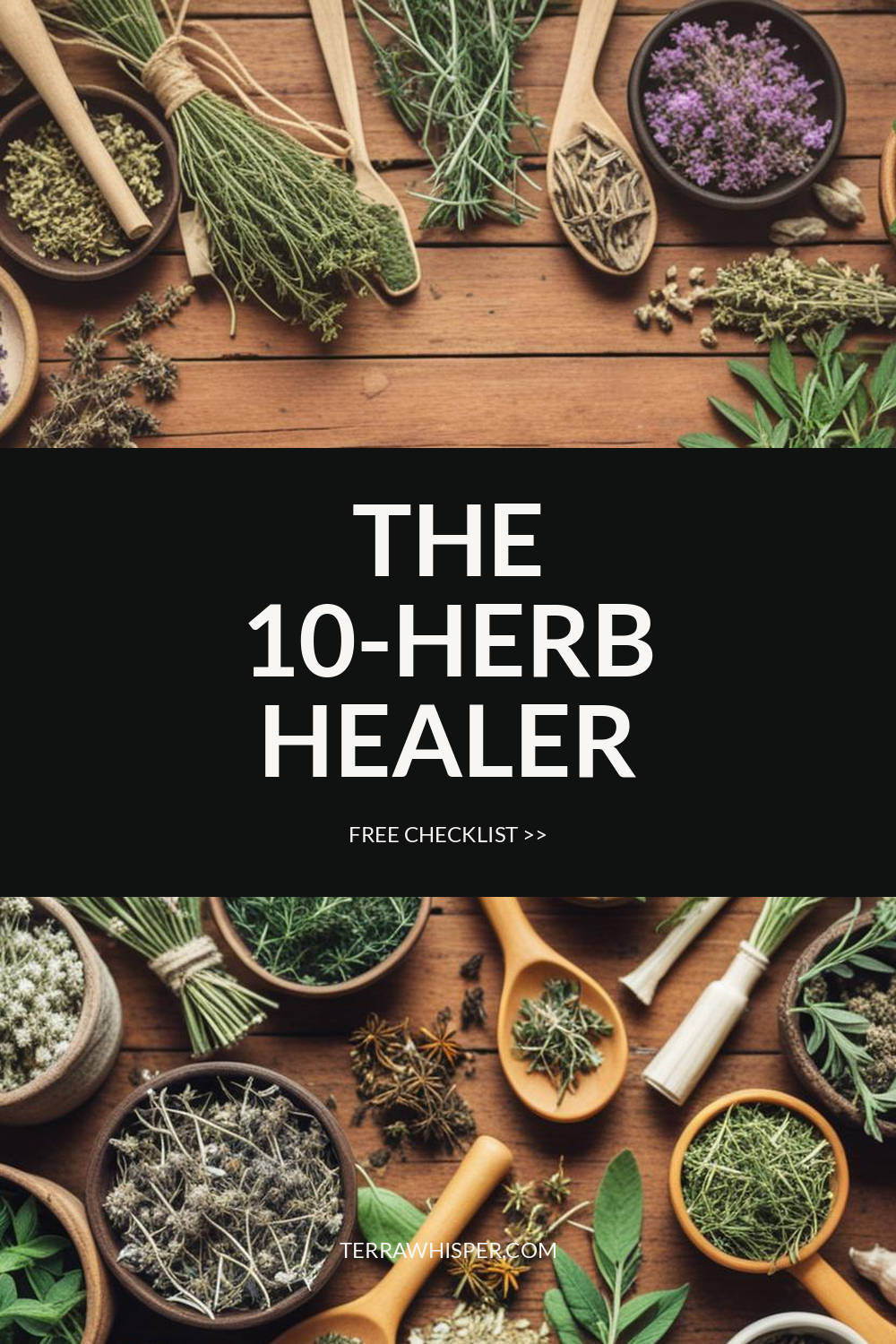Thyme (Thymus Vulgaris)
Information Reliability Score: 5/10
This score reflects the overall reliability of the information presented in this article. It is based on the quality of scientific evidence, accuracy of sources, and the transparency of references related to Thymus vulgaris.

Thyme, scientifically known as Thymus vulgaris, is a medicinal herb widely used for its therapeutic properties and distinctive aromatic flavor.
It is also recognized as an adaptogen, helping the body manage stress and promote balance. The primary benefits of thyme include its antimicrobial, anti-inflammatory, and antioxidant effects, making it valuable for respiratory health, immune support, and skin care. Historically, thyme has been used in traditional medicine across cultures, from ancient Egypt to medieval Europe, where it was employed to treat infections, digestive issues, and as a natural remedy for colds and coughs.
Today, thyme is embraced in modern wellness for its role in aromatherapy, herbal teas, and topical applications, with its unique compound thymol contributing to its potent medicinal profile.
FREE CHECKLIST
The Only 10 Herbs You Need to Heal 90% of Common Ailments.

Table of Contents
Scientific and Botanical Profile
Thyme, with botanical name Thymus vulgaris, is a perennial herb belonging to the Lamiaceae family, known for its aromatic and medicinal properties.
It is commonly referred to as Common Thyme, Wild Thyme, Vulgar Thyme, Sweet Thyme, and sometimes as Wild Thyme, reflecting its widespread use across regions. Native to the Mediterranean Region, Southern Europe, North Africa, West Asia, Central Europe, the Middle East, and parts of Southern France, Spain, Italy, Greece, and Turkey, thyme thrives in temperate climates. Morphologically, it features small, upright shrubs with creeping stems, narrow lance-shaped leaves covered in fine, hairy glands, and small, tubular flowers that are typically pink or lavender in color.
Its compact growth and aromatic foliage make it a popular choice for both culinary and ornamental purposes.
History and Cultural Relevance
Thyme was used by ancient civilizations such as the Egyptians, Greeks, and Romans for its medicinal and aromatic properties, often incorporated into herbal remedies and religious rituals.
In traditional medicine systems like Ayurveda and Chinese medicine, thyme has been valued for its ability to aid digestion, relieve respiratory ailments, and promote mental clarity. It played a significant role in various cultural ceremonies, including purification rites and as an offering to deities, and was commonly used in medieval European kitchens to preserve food and enhance flavor. Today, thyme remains a popular ingredient in natural remedies, such as throat lozenges for coughs and topical applications for muscle pain.
Its enduring presence in both culinary and therapeutic practices highlights its deep historical roots and continued cultural relevance.
Chemical Composition and Nutritional Profile
Thyme contains a rich array of bioactive compounds, including essential oils, flavonoids, terpenes, and alkaloids, which contribute to its distinct aroma and therapeutic properties.
The primary essential oil in thyme is thymol, a powerful phenolic compound known for its antimicrobial and antifungal effects, along with other terpenes such as carvacrol and p-cymene. Nutritional-wise, thyme is a good source of vitamins A, C, and E, as well as minerals like iron, manganese, and calcium, making it a nutrient-dense herb. Its high antioxidant content helps neutralize free radicals, supporting immune function and reducing oxidative stress in the body.
The combination of these compounds works synergistically to provide anti-inflammatory, antispasmodic, and digestive benefits when consumed or applied topically.
Medicinal Properties and Health Benefits
Thymus vulgaris has been widely recognized for its potent medicinal properties and diverse health benefits, primarily due to its high concentration of essential oils, flavonoids, and phenolic compounds.
It is known to support the respiratory system by alleviating symptoms of coughs, bronchitis, and asthma due to its expectorant and antispasmodic effects. Additionally, thymus vulgaris promotes immune function by stimulating the production of white blood cells, making it beneficial for the immune system and aiding in the prevention of infections. Compared to similar herbs like rosemary or oregano, thymus vulgaris offers a more pronounced antiseptic and antimicrobial activity, with higher concentrations of thymol, which enhances its potency in treating respiratory and skin infections.
Its versatility also allows it to be used in both culinary and medicinal contexts, making it a unique and valuable herb in traditional and modern health practices.
Discover the 10 best health benefits of Thyme.
Forms, Preparation and Usage
Thymus vulgaris has been widely used for its medicinal properties in various forms, including fresh and dried leaves, tinctures, powders, essential oils, and capsules.
It can be prepared as a tea by steeping dried leaves in hot water, or as a decoction by simmering for a longer period, while infusions involve soaking the plant material in liquid. Topical applications include using the essential oil diluted in a carrier oil for skin conditions or poultices made from fresh leaves. The recommended dosage for adults is typically 1-2 cups of tea per day or 1-2 capsules, while children may use smaller amounts if deemed safe by a healthcare professional.
Due to its potency, usage should be conservative, with short durations and frequent monitoring to avoid adverse effects.
Safety, Side Effects and Contraindications
Thymus vulgaris can be used as a medicinal plant for its antimicrobial, anti-inflammatory, and antioxidant properties, commonly in respiratory and digestive health.
However, it may cause side effects such as gastrointestinal upset, allergic reactions, and in some cases, increased heart rate or anxiety due to its thymol content. It can interact with certain medications, including anticoagulants and sedatives, potentially enhancing their effects or causing adverse reactions. During pregnancy and breastfeeding, thymus vulgaris should be used with caution, as its safety has not been fully established, and it may pose risks to fetal or infant development.
For safe use, it is recommended to consult a healthcare professional, follow recommended dosages, and avoid long-term use without medical supervision, especially in individuals with chronic illnesses or those taking other medications.
Growing, Harvesting and Storage
Thymus vulgaris grows best in well-drained, sandy or loamy soil with a pH between 6.
0 and 7. 5, and requires full sun to partial shade for optimal growth. It thrives in dry to moderately moist conditions, with regular watering during dry spells but avoiding waterlogging to prevent root rot. Regular pruning and deadheading encourage new growth and prevent the plant from becoming woody, while mulching helps retain moisture and suppress weeds. The best time to harvest thyme is during the flowering stage, typically in late summer, using sharp scissors or shears to cut the stems just above a leaf node to promote regrowth.
After harvesting, the leaves should be dried in a well-ventilated area away from direct sunlight, then stored in airtight containers in a cool, dark place to preserve its potency and aroma.